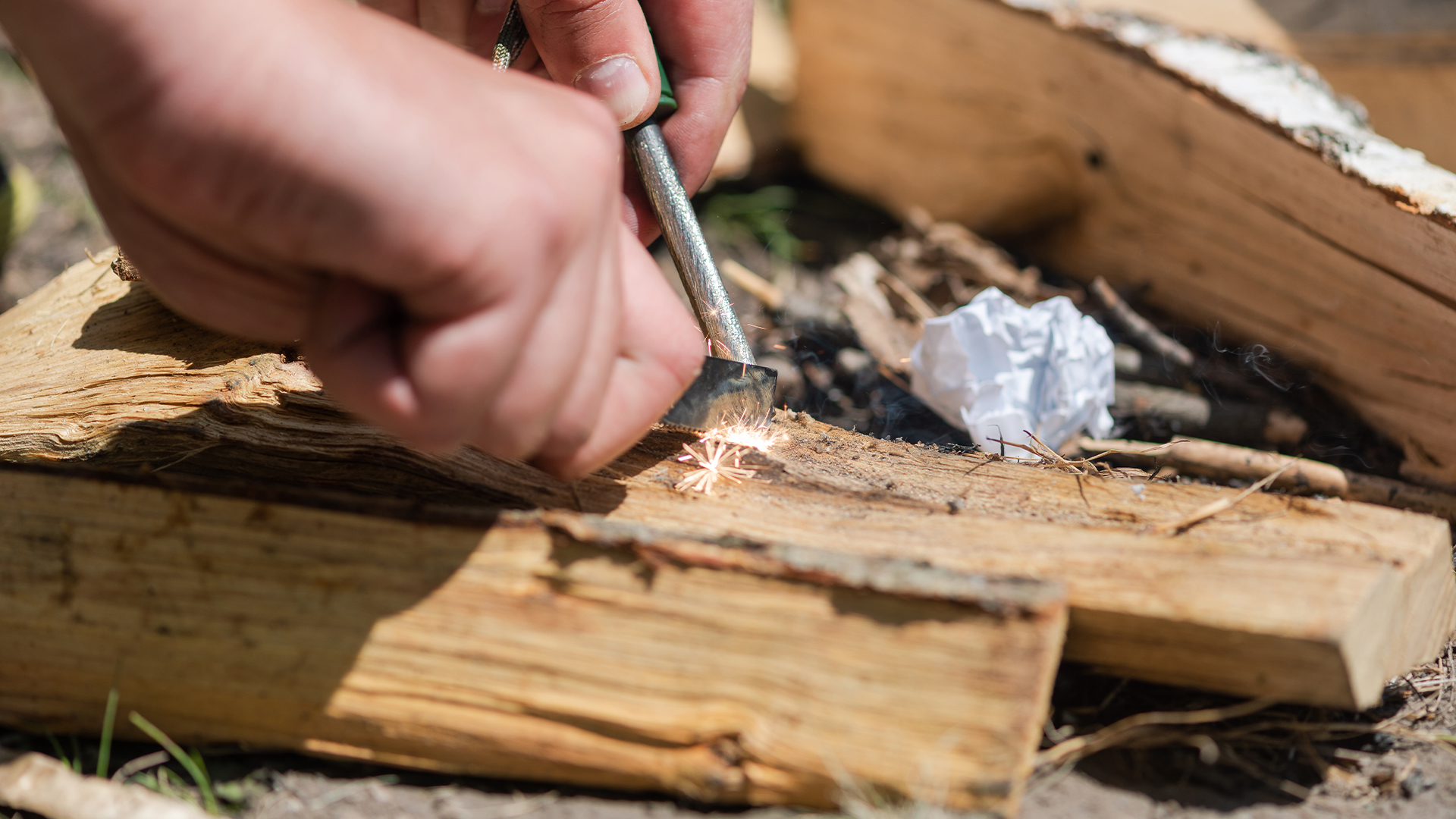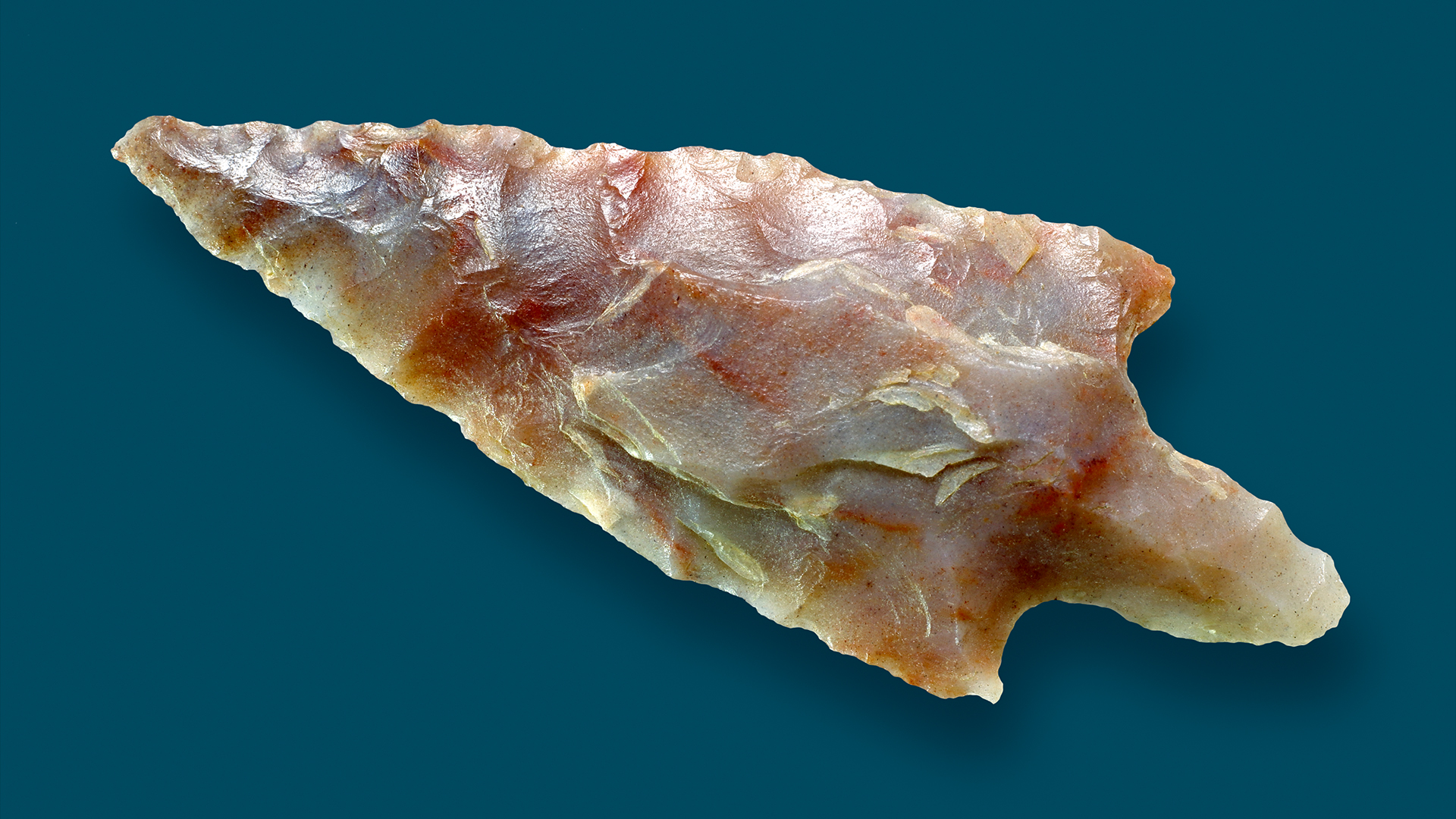Why does striking flint against steel start a fire?
What's the science behind starting a fire with flint and steel?

Any outdoor survivalist worth their salt probably carries something in their pack to start a fire. If they're a purist, their tools of choice might be flint and steel. This pair of tools is a reliable way to start a fire in the backcountry, with a little skill.
But why does it work? Why does striking a flint rock against a piece of steel start a fire, whereas rubbing two random rocks together doesn't?
All fire-starting methods have a similar goal: generating enough heat to ignite a fuel source.
When scraped together, flint and steel can generate this heat quickly because of the way the iron in the steel reacts with the surrounding air when it's shaved off by the flint, said Peter Sunderland, a fire scientist at the University of Maryland.
This is how a classic pocket lighter works, according to Sunderland. Each flick of the wheel rubs flint against steel, igniting the butane fuel inside and producing a flame.
But understanding exactly why this combination is so effective requires digging into the chemistry of oxidation. Oxidation is when a chemical element or compound combines with oxygen, changing its properties. When this process happens to iron, it's known as rusting. Using flint and steel to start a fire harnesses a side effect of oxidation: heat.
Related: What's the longest-burning fire in the world?
Get the world’s most fascinating discoveries delivered straight to your inbox.
Early humans made tools out of flint because the rock can be shaped into arrowheads and sharp blades. Flint is much harder than steel, so striking the two together shaves off tiny bits of iron from the steel.
Iron oxidizes very easily when it's exposed to the air, but the process usually happens very slowly. A neglected car or a piece of abandoned farm equipment will take many years to become covered in rust, for example.
However, these tiny iron particles from the steel oxidize within fractions of a second, though they wouldn't look rusty to the naked eye. This creates very hot sparks. The process happens so quickly because the bits of iron have much more surface area than a bulk piece of iron.
"What's important is the surface-to-volume ratio," Sunderland told Live Science. With a small iron shaving, "the volume is basically zero, but there's lots of surface area."
So, when a tiny piece of iron is shaved off, many iron atoms are suddenly exposed to the air and can oxidize all at once. The chemical reaction rapidly generates a tremendous amount of energy as heat. And if enough of these burning-hot iron shavings fall into a pile of dry leaves or twigs, they can ignite the kindling and get a fire going.
It can be challenging to get the sparks to turn into a flame, so it's helpful to have something that the sparks can more easily ignite to accelerate the process. Shavings of steel work well, Sunderland said — they'll flame up when sparks land on them. Historically, people used a "char cloth" — a burnt piece of fabric that ignites easily and then slowly smolders, giving the kindling around it time to light.
Before steel was widely produced, humans might have generated sparks by scraping flint against other iron-rich rocks, such as pyrite, better known as fool's gold.
Other fire-starting technologies use similar principles. Magnesium fire starters, a popular off-the-shelf option, take advantage of the fact that magnesium burns very hot. So scraping shavings of magnesium into a pile of tinder and then generating sparks by scraping an iron-containing rod above them can quickly get a crackling fire going.
Matches use a completely different set of chemical reactions, but they have a similar goal: generating a lot of heat quickly to ignite a fuel source.
Sometimes, this process happens accidentally, said Sara McAllister, a research mechanical engineer with the U.S. Forest Service in the Missoula Fire Sciences Lab. For instance, wildland fires can start when someone tows a trailer with a chain dragging behind on the pavement, creating sparks. Or clashing power lines generate sparks that set dry grass ablaze.
"They're all kind of in the same realm: tiny, hot particles that land in dry kindling," McAllister told Live Science.

Laurel Hamers is a writer specializing in science, medicine and the environment. Now based in Oregon, she was previously a staff writer at Science News magazine in Washington, D.C. Laurel holds a bachelor's degree in biology from Williams College in Massachusetts and is a graduate of the UC Santa Cruz Science Communication Program.




